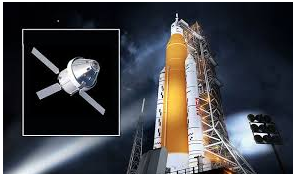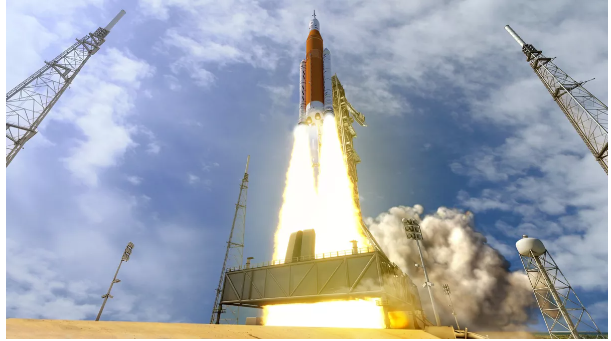Artemis Launch Makes History
NASA’s Space Launch System rocket will launch with Orion atop it from Launch Complex 39B at NASA¹s modernized spaceport at Kennedy Space Center in Florida.
After two aborted launches, NASA’s historic Artemis 1 mission finally took off on November 14, 2022. The mission will send the unmanned Orion Space Capsule around and beyond the moon and back.
At a height of 322 feet, this rocket weighs 5.75 million pounds, making this rocket more powerful than Apollo 11. According to NASA, its mission is to do a complete orbit of the moon and splash down off the coast of San Diego. The rocket was supposed to launch on 8/29/22, but problems with its main infrastructure caused the schedule to be delayed.
The first mission is basically a test lap. Artemis 2 & 3 will develop a lunar orbit satellite and eventually a moon base.
“A moon base that will allow us to prepare to explore other parts of our solar system – such as Mars, and possibly think about how we might explore outside of our solar system someday,” explained science teacher Jim Bradford.
But the only way to get it to the moon is this bulky rocket which has been deemed the most powerful rocket in the world.
The Orion spacecraft is the shuttle that houses astronauts when going to the moon and back. The capsule is actually the most difficult part to make. With hundreds of buttons and switches, it’s an amazingly complex shuttle.

(Photo by NASA)
While NASA checks for any damage from Hurricane Ian, astronauts are doing moon-walking drills in Arizona. They are also learning to study rock formations in Arizona’s deserts.
The Artemis space missions are mainly focused on lunar exploration. One area of interest might be the water ice that, according to The Planetary Society, has been observed at the moon’s poles.
“Water is a necessary component of all life, as we currently understand – so, the presence of water certainly makes it easier to think about how we might establish a long presence outside of the Earth,” said Bradford.
Even though Artemis’ missions will be strictly to the moon, the long-term goal is to learn how to live in space and take what we learn to Mars and, who knows, maybe even beyond.
“I think it is human nature to want to explore,” said Bradford, “and that desire extends beyond the Earth.”
After two aborted launches, NASA’s historic Artemis 1 mission will try again on November 14, 2022. The mission will send the unmanned Orion Space Capsule around and beyond the moon and back.
At a height of 322 feet, this rocket weighs 5.75 million pounds, making this rocket more powerful than Apollo 11. According to NASA, its mission is to do a complete orbit of the moon and splash down off the coast of San Diego. The rocket was supposed to launch on 8/29/22, but problems with its main infrastructure caused the schedule to be delayed.







